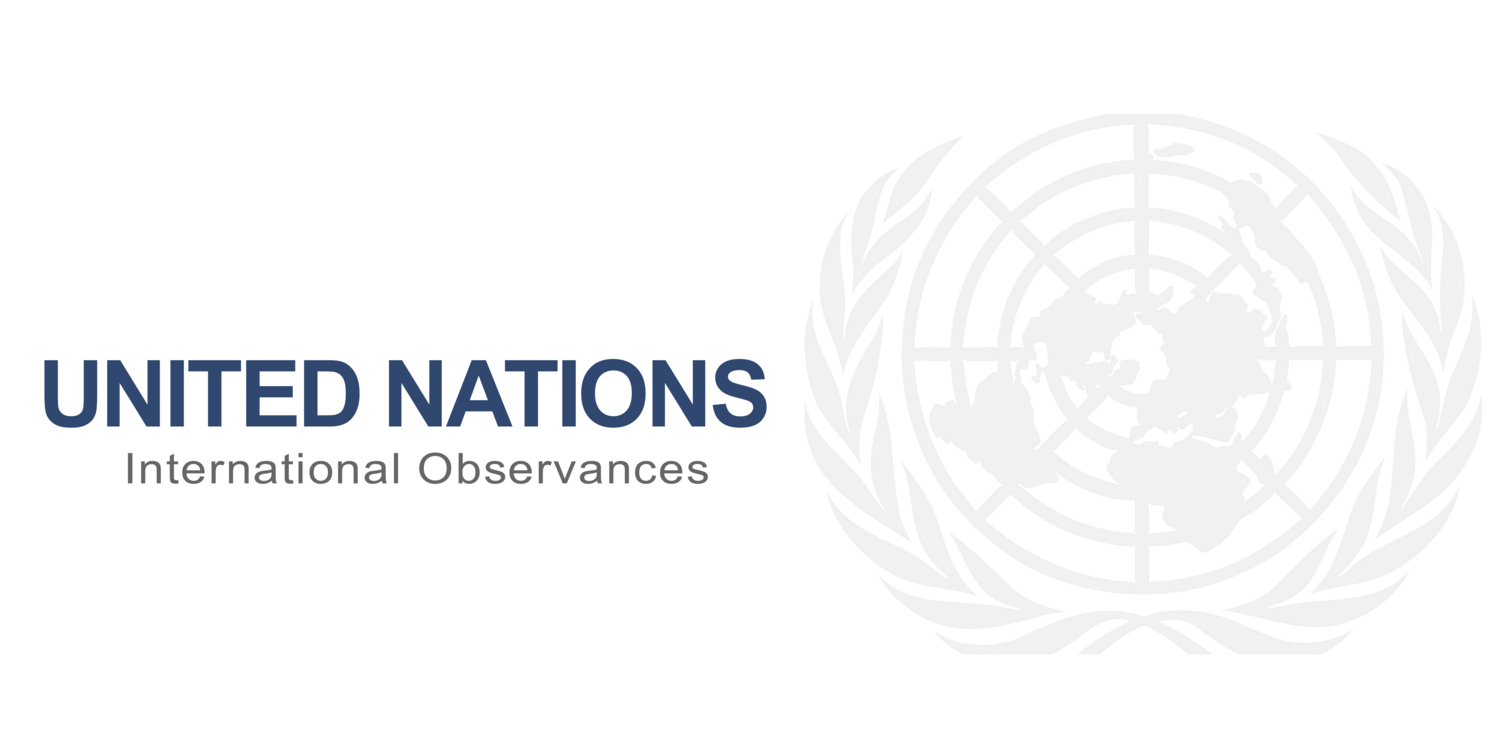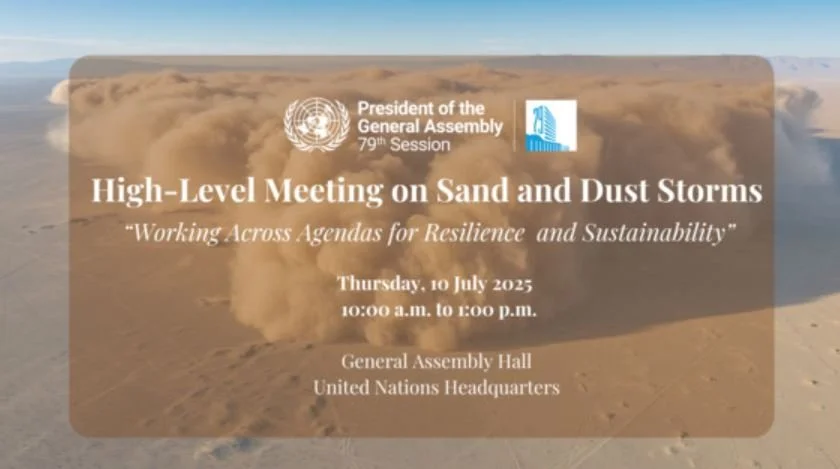PURPOSE: At least 25% of global dust emissions originate from human activities, and in some areas, desert dust has doubled in the 20th century. The impact of this phenomena is difficult to control, as human activity in one part of the world can cause sand and dust storms in another region. However, just as sand and dust storms are caused by human activities, these storms can also be reduced through human actions. The United Nations General Assembly stressed the need for cooperation at the global and regional levels, with a view to preventing, managing and mitigating the effects of sand and dust storms through the enhancement of early warning systems and the sharing of climate and weather information to forecast sand and dust storms. The General Assembly reaffirmed that resilient action to combat and reduce sand and dust storms requires a better understanding of the severe multidimensional impacts of sand and dust storms, including the deterioration of the health, well-being and livelihood of people, increased desertification and land degradation, deforestation, loss of biodiversity and land productivity, threatening food security, and their impact on sustainable economic growth.
FORUM: "Sand and Dust Storms: Working Across Agendas for Resilience and Sustainability". International Day of Combating Sand and Dust Storms 2025. Sand and dust storms (SDS) are an increasingly global issue affecting 151 countries worldwide with numerous impacts on the environment, food security, agriculture, health, transportation, energy, human–societies and economies. Sand and dust storms are an essential element of the Earth’s natural bio-chemical cycles, but are also caused in part by human-induced drivers, including climate change, and unsustainable land management and water use. In turn, sand and dust storms contribute to climate change and air pollution. Sand and dust storms’ impacts are felt in all regions of the world, both in developed and developing countries, and pose severe challenges to achieving 11 of the 17 Sustainable Development Goals, especially: SDG-2 : Zero hunger — SDG-3 : Health for all — SDG-6 : Water and sanitation — SDG-8 : Economic growth — SDG-11 : Sustainable Cities and societies — SDG-13 : Climate action, and — SDG-15 : Biodiversity forests and desertification. This call to action represents a significant step in enhancing awareness of SDS and mobilizing the political will and resources needed to address the SDS related issues which present a serious challenge to the achievement of the Sustainable Development Goals (SDGs) and associated targets. Follow the conversations with the hashtags: #12july, #sandstorms, #duststorms.
EVENTS: On July 12th, a High level Panel Discussions and several events were organized around the world.
On July 10th at 10: 30 am EST, the World Meteorological Organization (WMO) will released its annual airborne dust bulletin, highlighting the global impact of sand and dust storms. The bulletin discusses the hotspots, hazards, and WMO's efforts to combat these storms. It emphasizes the connection between dust storms, climate change, and various socio-economic sectors, including agriculture, solar energy production, and health. Watch the WMO - Press Conference: Sand and Dust Bulletin 2025.
On July 10th; At the UNHQ; starting at 16:00 pm EST; The 3rd edition will be, co-organized by the Permanent Missions of Iraq, the Islamic Republic of Iran, and Senegal at the United Nations Headquarters in New York, featured various speakers from organizations collaborating in the United Nations SDS Coalition. A high-level meeting with an opening and plenary segment will be held to bring together Member States and Observers at the highest level possible to discuss the challenges faced by affected countries and to promote practical, coordinated actions at both regional and global levels. It will also be an opportunity to discuss action-oriented recommendations and address the challenges faced by countries affected by sand and dust storms. Read the concept note and watch the livestream!
STATEMENTS: Letter from the President of the General Assembly on the High-level meeting on sand and dust storms.
PODCASTS: The IPCC Sixth Assessment Report provides a more detailed regional assessment of climate change, including a focus on useful information that can inform risk assessment, adaptation, and other decision-making, and a new framework that helps translate physical changes in the climate – heat, cold, rain, drought, snow, wind, coastal flooding and more – into what they mean for society and ecosystems Listen to the audio-podcast!
CAMPAIGN: Let’s protect People from Sand and Dust Storms and work on the following priority areas: identifying and analysing SDS source areas; assisting countries in developing policy plans; implementing effective practices for source and impact mitigation; facilitating knowledge sharing and capacity enhancement; and identifying vulnerable locations and populations. Get the communication materials!
WHY WE CELEBRATE THE DAY?
HOW TO GET INVOLVED!
PARTNERSHIPS
Recognizing that sand and dust storms and their negative impacts at different scales are issues of international concern, the United Nations General Assembly resolution A/RES/77/294 proclaimed July 12th as the International Day of Combating Sand and Dust Storms
Each year, an estimated 2 billion tonnes of dust is raised into the atmosphere. According to the report, Impacts of Sand and Dust Storms on Oceans: A Scientific Environmental Assessment for Policy Makers, even the smallest elements can have substantive effects on ecosystem functioning – and on the Earth system, at large. The aim of the Sand and Dust Storms Compendium is to provide information and guidance on how to assess and address the risks posed by sand and dust storms and plan actions to combat sand and dust storms. The Compendium brings together this information from a wide range of sources
Human actions still have the potential to determine the future course of climate. The evidence is clear that carbon dioxide (CO2) is the main driver of climate change, even as other greenhouse gases and air pollutants also affect the climate. Stabilizing the climate will require strong, rapid, and sustained reductions in greenhouse gas emissions, and reaching net zero CO2 emissions. Limiting other greenhouse gases and air pollutants, especially methane, could have benefits both for health and the climate. Let’s
Facilitate exchange of knowledge, data and best practices to promote effective and coherent actions on SDS.
Encourage and promote collaboration on initiatives and actions, including advocacy and funding initiatives.
Facilitate dialogue and collaboration amongst affected countries in addressing SDS issues collectively.
Facilitate the capacity-building of countries to raise their awareness and enhance their preparedness and response to SDS in critical regions.
The International Day of combating sand and dust stoms is organized by the United Nations General Asembly, the United Nations Coalition on Combating Sand and Dust Storms (UNCCD), the World Meteorological Organization (WMO), the Intergovernmental Panel on Climate Change (IPCC), the UN Environment Management Group and the United Nations Convention to Combat Desertification (UNCCD).
With the participation of International and regional Organizations; Civil society organizations, Non-Governmental aorganizations, researchers and academics.

